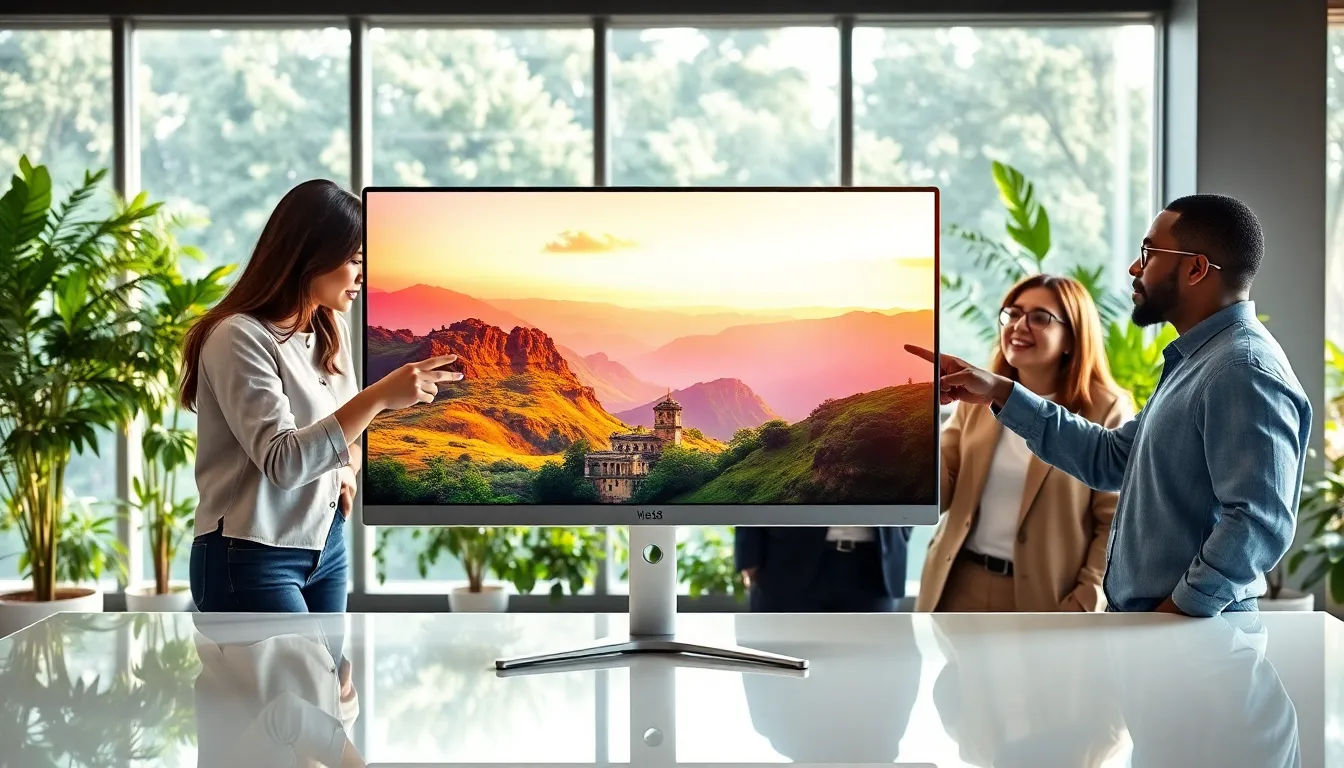When it comes to displays, two acronyms often pop up: IPS and FHD. But what do they mean, and why should you care? Imagine watching your favorite movie or playing a breathtaking game on a screen that doesn’t do it justice, truly heartbreaking, right? In this text, we’ll jump into the world of IPS (In-Plane Switching) technology and FHD (Full High Definition), breaking down their differences in a way that’s as easy to digest as your favorite popcorn. So, buckle up, let’s explore the fascinating realm of displays with a sprinkle of humor and a lot of knowledge.
Ips Vs Fhd

IPS technology, or In-Plane Switching, is a type of LCD display panel technology. It’s designed to offer better color reproduction and viewing angles compared to traditional display technologies like Twisted Nematic (TN) panels. In simpler terms, if you’ve ever noticed how some screens look spectacular from one angle but downright dull from another, you’ve experienced the downsides of lower-quality panels. IPS panels keep the colors vibrant and the clarity sharp, regardless of where you’re viewing from. This is primarily achieved through the alignment of liquid crystals in the panel, they sit in parallel, allowing for more consistent color reproduction. So, if a friend drifts into your line of sight while you’re binge-watching your favorite series, they won’t steal your cinematic experience.
IPS technology is widely embraced in various fields, everything from smartphones to televisions, because of its sharp imaging capabilities and vibrant colors. Let’s be honest, who wants to deal with washed-out colors or blurry images, especially during a crucial moment in a game?
Benefits Of IPS Displays
IPS displays come packed with a toolbox full of benefits. First up, color accuracy is a standout feature. For photographers and graphic designers, this is a non-negotiable: they need their colors to pop accurately, and IPS provides just that. Unlike TN panels, which may exaggerate brightness or skew colors, IPS technology offers a more true-to-life presentation.
Next on the list is viewing angles. Have you ever gathered around a screen only to realize that people sitting at the ends could barely see? Not with IPS. These displays allow for wider viewing angles, making it perfect for shared viewing experiences, think movie nights or gaming marathons with friends. You can lounge anywhere on the couch, and the colors remain vibrant.
Also, IPS panels often boast better contrast ratios and overall picture quality. Want to watch the sunset on screen? IPS has got you covered. Plus, many modern IPS displays incorporate advanced features like HDR (High Dynamic Range), increasing the range of colors and brightness, making clouds fluffier and skin tones livelier. So essentially, you’re not just buying a display: you’re investing in an experience.
What Is FHD?
Full High Definition, commonly known as FHD, stands for a display resolution of 1920 x 1080 pixels. In simpler terms, this means that there are 1,920 pixels on the horizontal axis and 1,080 pixels on the vertical axis. This resolution delivers clear, crisp images that are perfect for everything from streaming your favorite series to playing high-stakes video games.
FHD has become a standard in today’s display technology. Why? Because it strikes a balance between clarity and accessibility. It’s widely used, making it relatively affordable compared to higher resolutions like 4K or 8K. Without a doubt, FHD provides enough detail to keep you satisfied, whether you’re watching sports or indulging in the latest blockbuster.
Comparative Analysis: IPS Vs FHD
When dissecting the differences between IPS and FHD, it’s crucial to understand they serve different purposes. IPS is a panel technology, while FHD refers to resolution. Both play distinct roles in determining the quality of your viewing experience.
Visual Quality: Color Accuracy And Brightness
IPS displays are champions in color accuracy. They provide a rich and vibrant color palette, making everything from movies to gaming graphics pop. FHD, on the other hand, contributes to clarity rather than color. A screen can be FHD but still have poor color representation if it’s not an IPS display. Hence, while FHD contributes to sharpness, it’s the IPS technology that breathes life into what you see.
Viewing Angles And Response Times
IPS panels excel in viewing angles, making them ideal for group viewing scenarios. You won’t have to squint or angle your head just to see what’s happening. FHD resolution enhances clarity, which can be beneficial in fast-paced scenes found in gaming or action movies. A good combo of both is indispensable for an all-around engaging experience.
Applications And Use Cases
So, where exactly can IPS and FHD find their homes? IPS technology is widely used in monitors, televisions, smartphones, and tablets. It’s favored by professional designers and content creators due to its superior color accuracy and detail. FHD can be found in budget-friendly monitors, televisions, and even laptops, offering a decent experience for casual users.
Gamers, in particular, will benefit from IPS displays for their vibrant colors and quick response times. FHD resolution paired with an IPS panel can enhance immersive experiences in gaming, where every pixel counts. Meanwhile, content producers can count on IPS to accurately reflect their work, ensuring what they see on screen translates well into final products.
Choosing The Right Display For Your Needs
Choosing between IPS and FHD eventually boils down to individual needs. Casual users might find that a basic FHD display sufficient for watching movies or browsing the web. But, for those who engage in graphic design, gaming, or other visually intensive tasks, an IPS display can make a world of difference.
It’s wise to consider your budget as well. While IPS panels may cost a bit more than standard FHD panels, the investment is often worthwhile when you factor in the lifespan and quality of your views. If color accuracy and wide viewing angles excite you, an IPS panel paired with FHD resolution is an option worth considering.

